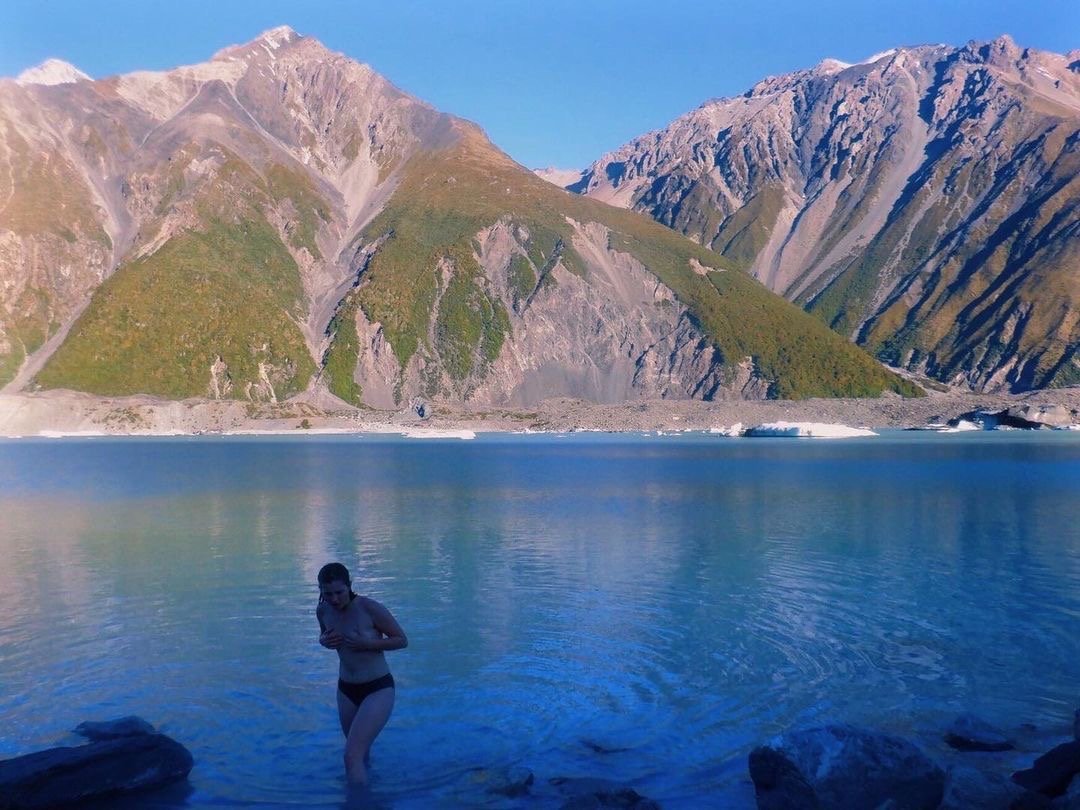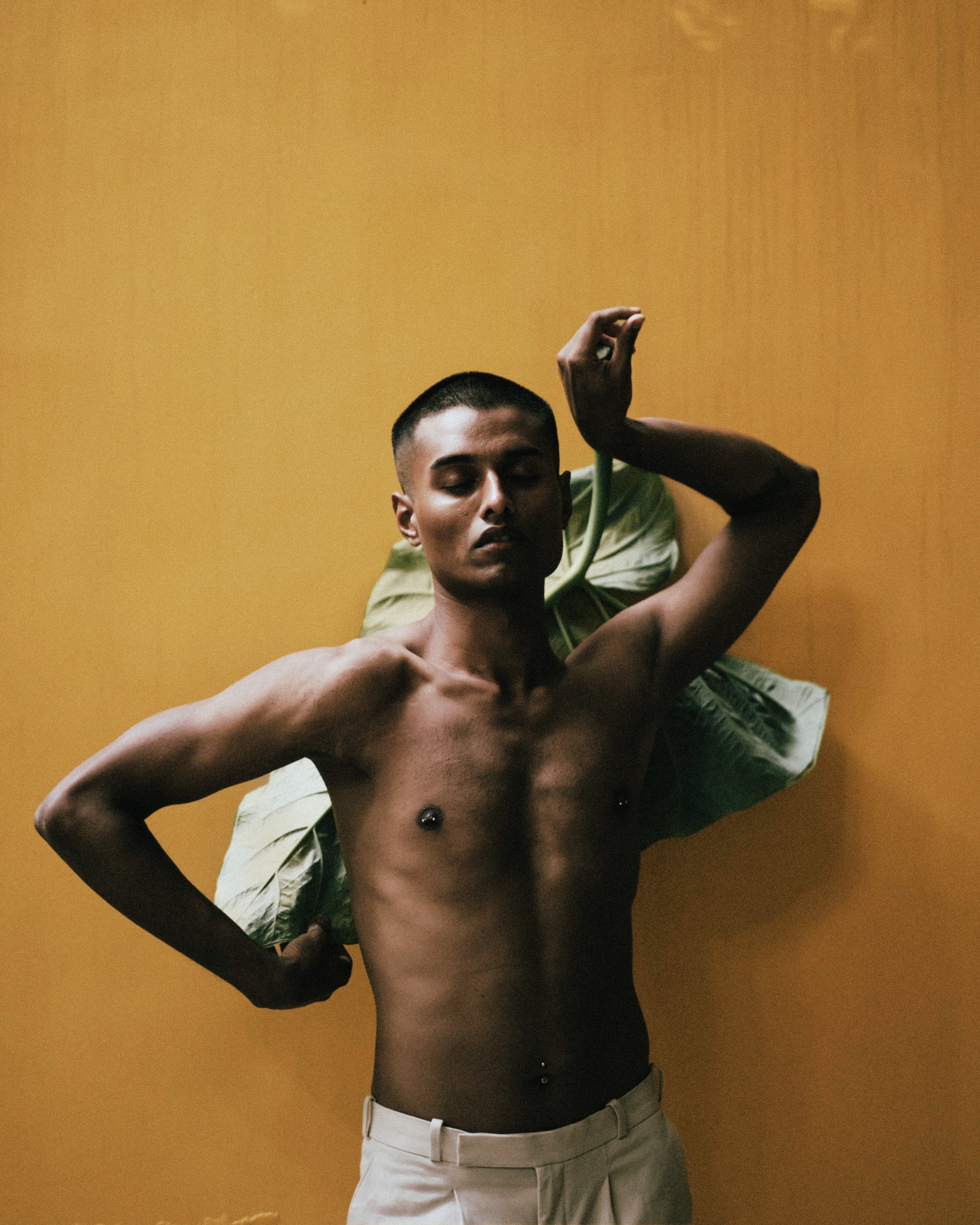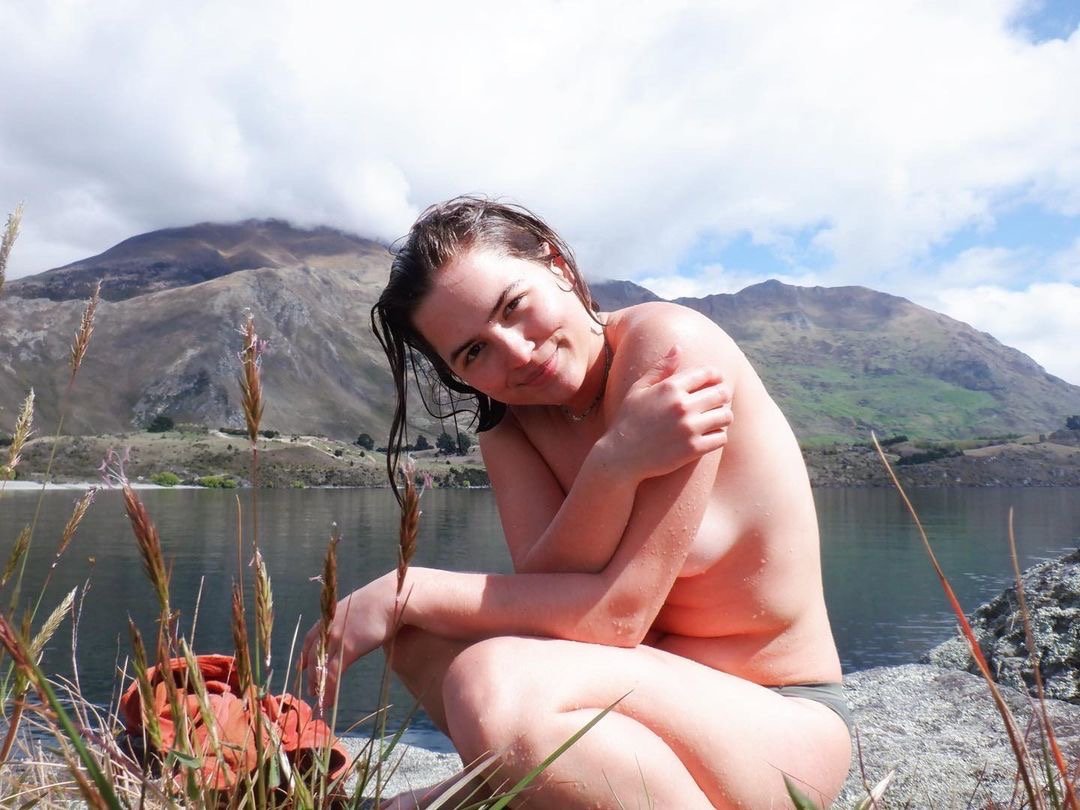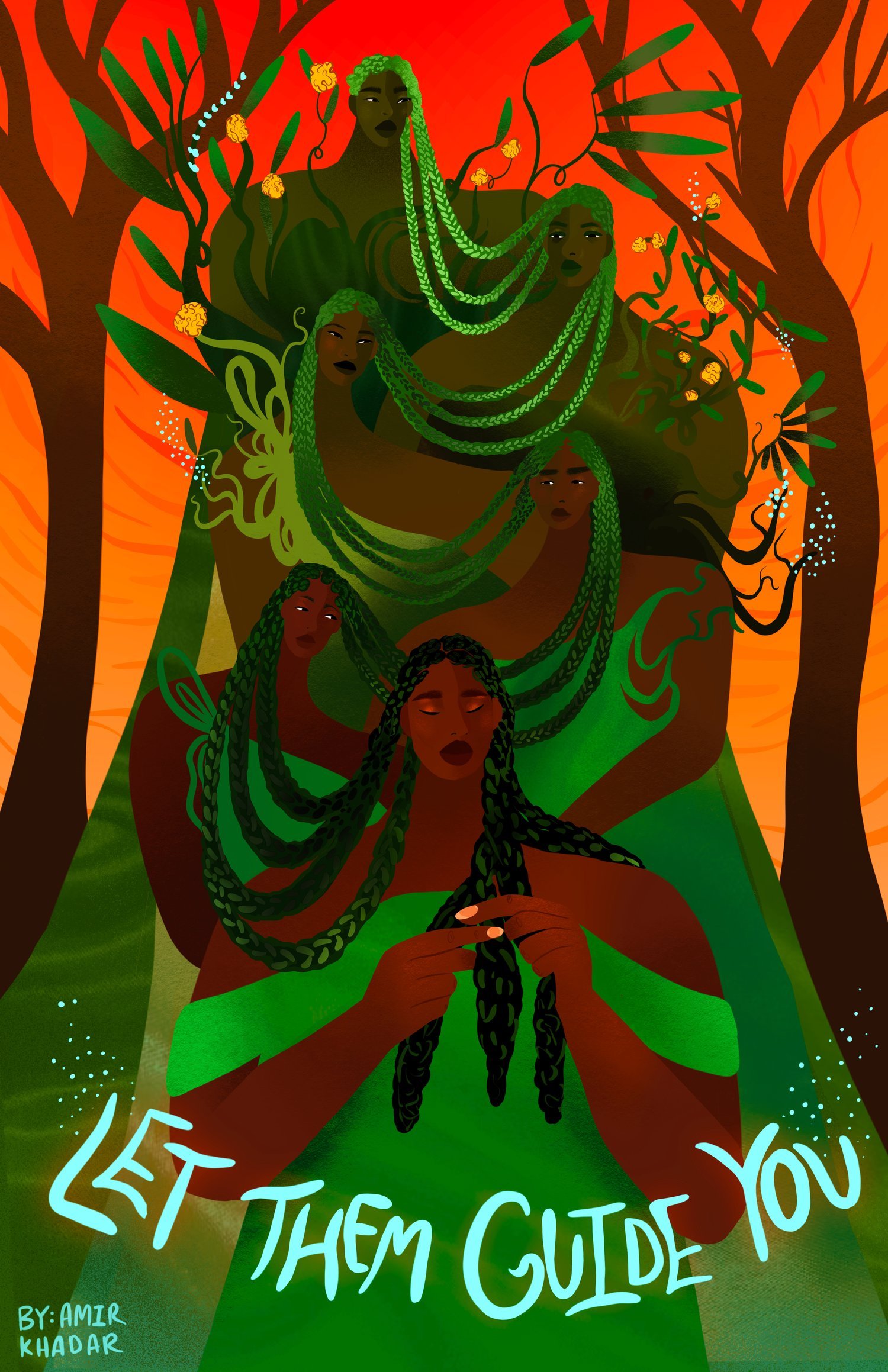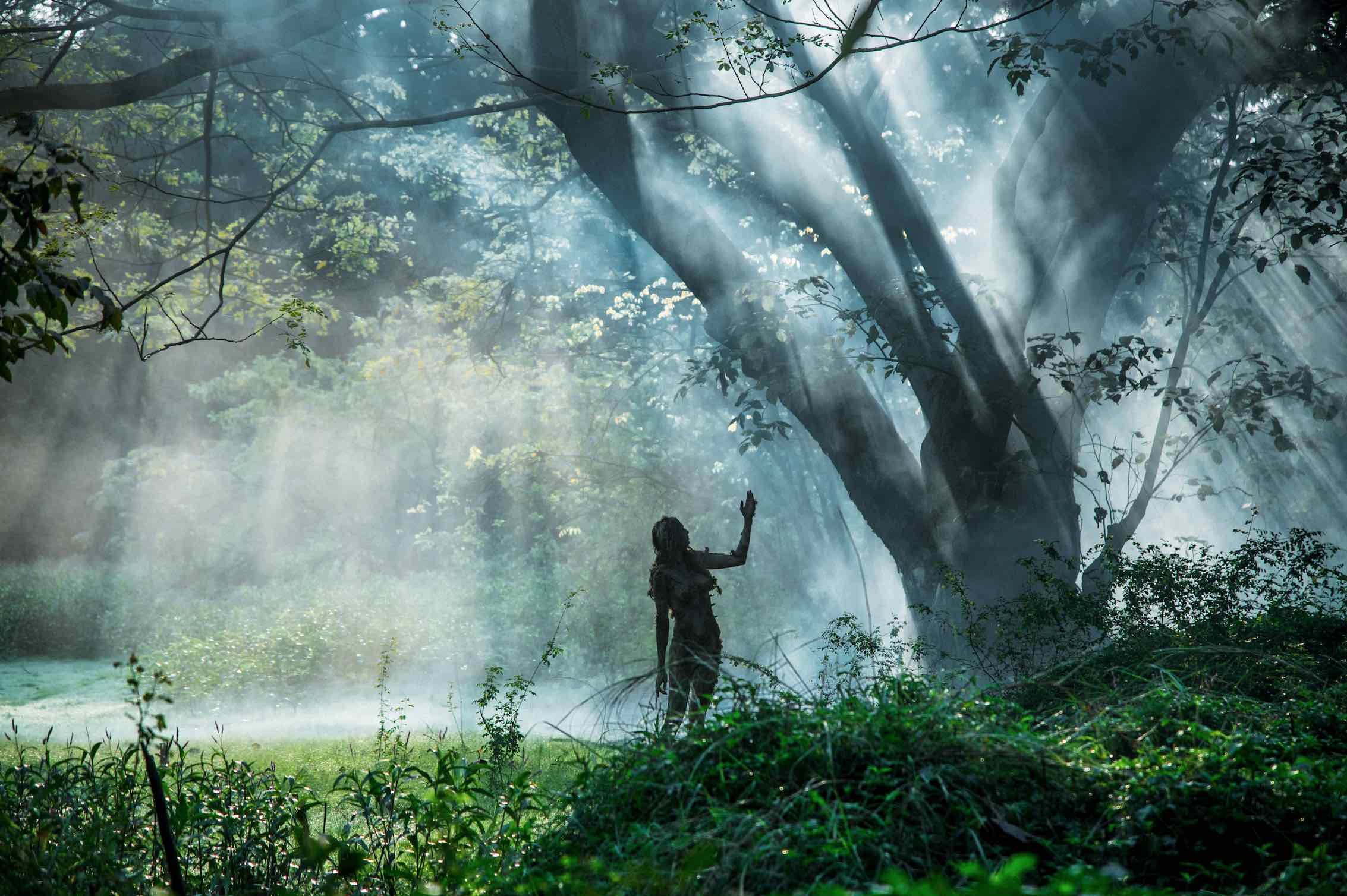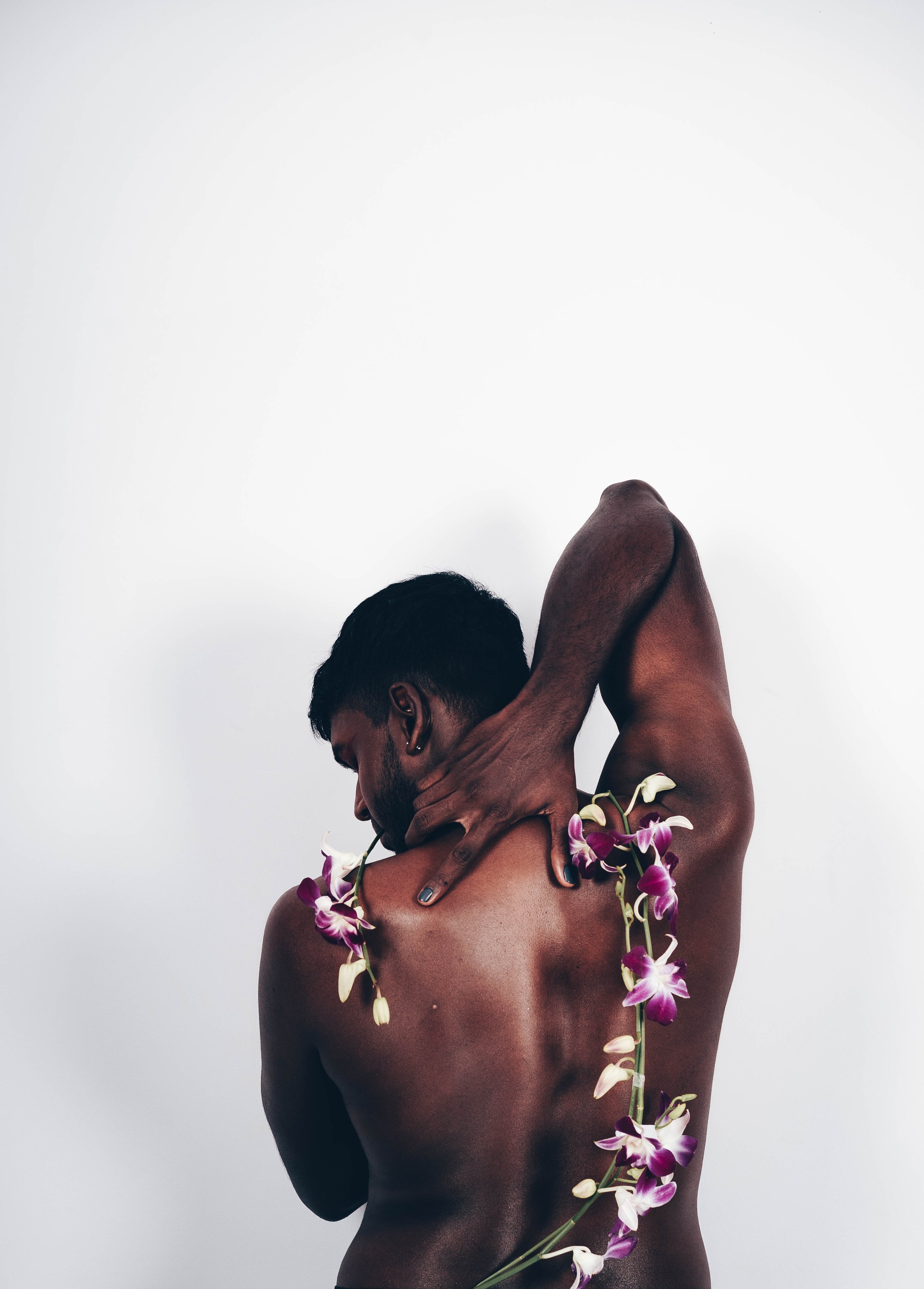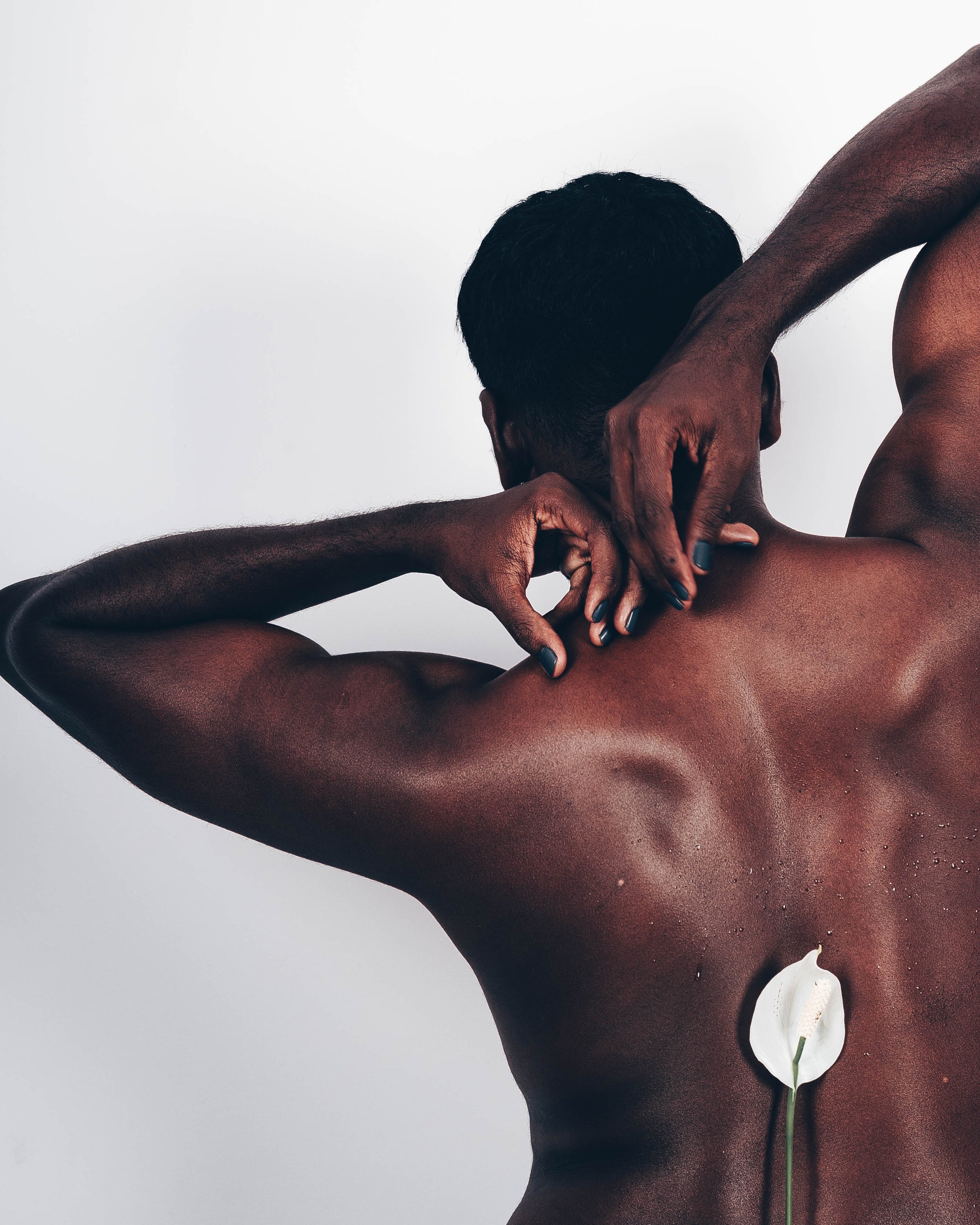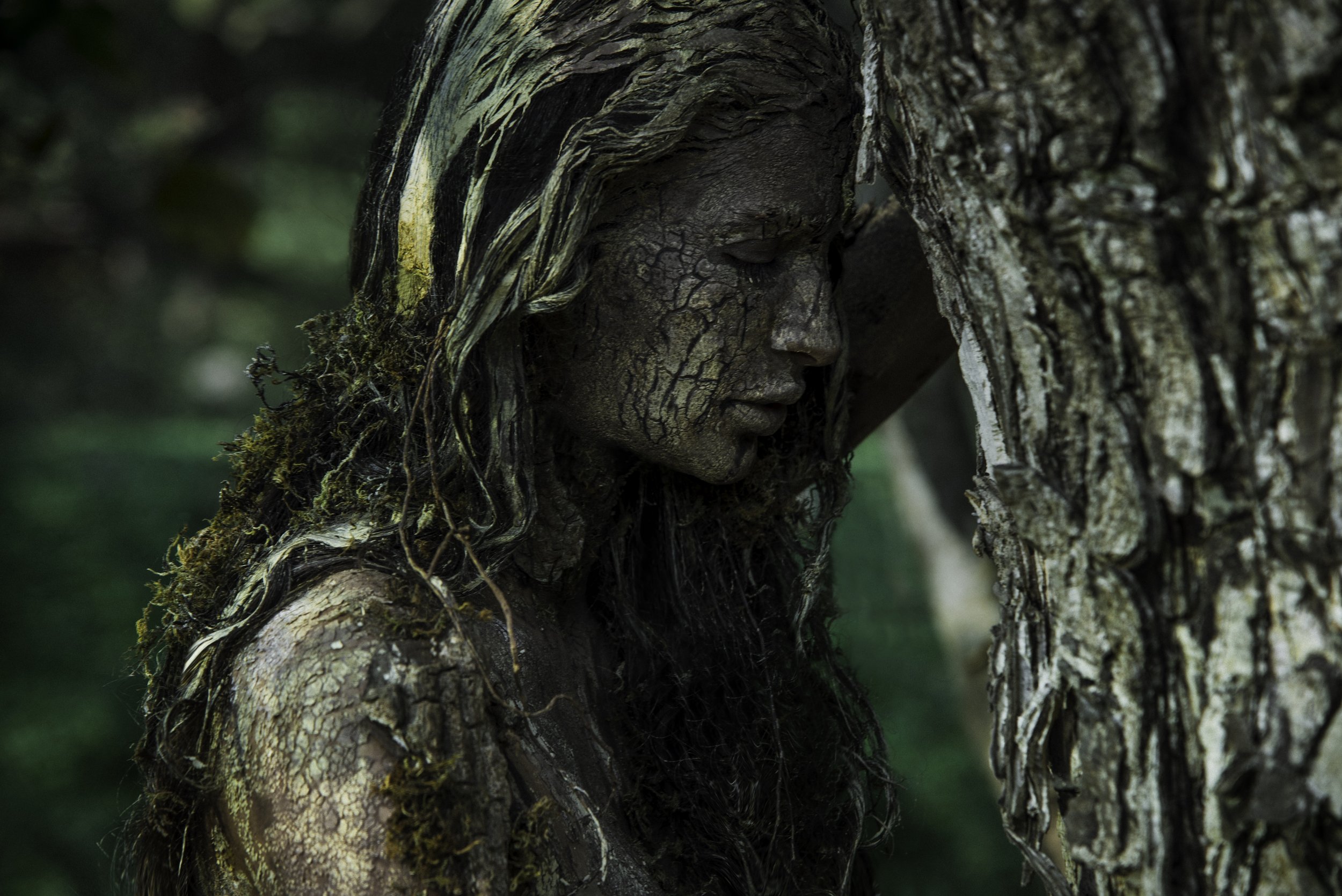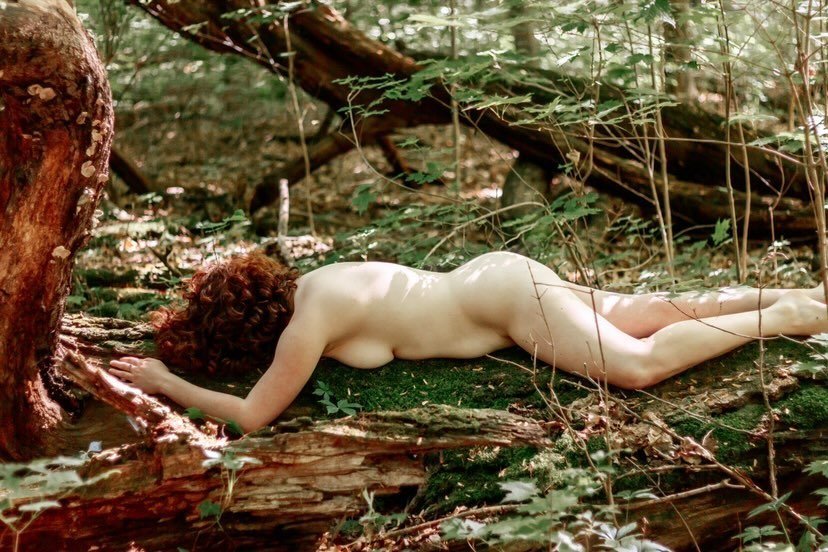Earth 🌍 Month Art Project 2022
The earth is a canvas. Discover a collection of submissions from our collective Earth Month Art Project. Featuring messages about the earth, climate justice, and climate liberation from our global community of artists, writers, painters, photographers and more. The curation below was review by the Feminist art team and final selections will continued to be featured on @feminist and @art.feminist. Thank you to the Feminist community of artists and creators for their contributions.
We encourage you to learn more about the featured artists and support their work 🌐
Gwen Charles
“My most recent works reflect on my own physical illnesses, caring for my sick adult child, my mother’s caretaking of my aging father and feelings of loss and grief. These recent circumstances affect me deeply and so I turn to nature for respite. I have been replicating the motions of caretaking and caregiving in the natural environment, using plants as stand-ins and comparisons for the patient and caregiver relationship. My past few series connect to themes of the Anthropocene, ecofeminism and reconnecting to nature, while exploring glaciers, storms, global warming as the female body representing these forces.”
Learn More Here
ABOUT THE SUBMISSION
10:10 min, Full color video and sound
In this slow, intimate film, dappled light flickers over velvety soft moss growing slowly on the bark of a fallen tree in the middle of the forest. Aria wears a handmade costume of textured knitted fabric fashioning an assemblage of moss-like forms across the body. Moss growing on the bark of a fallen tree offers hope for future life and pleasure.
Aria Roach lies on the fallen, moss-covered tree, utterly relaxed, connecting with the energy of the shady forest floor in the Eagle Rock Reservation part of unceded traditional territories of the Lenape nation. We honor and respect the Lenape people of the past, present, and future, and their stewarding and connection to their ancestral lands.
From a series of photos and videos resting on felled and fallen trees during the pandemic lockdown. There is no rest in caretaking. Here we can take a rest with these felled and fallen trees, giving them comfort, in their final rest.
Fabric provided by Marion Lake.
Original musical score by Iris Andal.
Raajadharshini
UK
“As you don’t see it”
This series of images are challenging limitations imposed by normative understandings of gender identity and expression in a society that is increasingly rigid and oppressive. Conventionally, when photographing male figures, wrists are always shown to be closed, held with a tight grip whereas female figures are shown as tender, extremely soft, and slippery hold, etc. It is an attempt to appreciate the idea of seamlessly blending back to nature and embracing one's body in all ways possible, breaking of the idea of what is usually expected from male bodies.
Discover More
Credits
Concept: Kiss Nuka & Navzar Eranee, Directed by Navzar Eranee, Shot by Vikash Nowlakha, Edited by Kiss Nuka, Make up and Prosthetics by Preetisheel Singh at Da Make Up Lab, Produced by Walkabout Films
Kiss Nuka
“Don’t Be Affraid”
Don’t Be Afraid is the visual story of our connection to Nature and how deeply the cycle of our life and death is intertwined with her. I have explored the customs and rituals of my culture and visually expressed the journey I believe we take when we die.
AMIR KHADAR
Minneapolis, Minnesota
Amir Khadar (They/Them) is a Sierra Leonean-American artist, designer, and educator from Minneapolis, Minnesota. Their main mediums are poetry, fibers, and digital art. They are actively experimenting and growing as an artist through establishing relationships to ways of making, but their practice has always been grounded through afro-futurism, gender theory, beauty, and ancestral practices.
Follow & Support Here
‘Shift’ (Left)
“We spent time imagining economies that were regenerative and liberating and that was very inspiring to me. This poster is visualizing a transaction where all the involved parties are benefiting. Where there is immediate use for all things being shared, and both parties are giving and taking, but neither is being exploited.”
‘Guide’
This illustration (+ sketch) was meant to depict the process of receiving information from the earth and ancestors. All the liberatory systems we desire have existed somewhere in time/space and a lot of the work is just bringing them to the present through letting them be the guides. I feel like braiding embodies this relationship because braiding knowledge is very much from a distant time/space & the fact our bodies have maintained the knowledge to braid through all the marginalization and changes of space just shows how close/tangible liberation is.
Earthwomb (2019)
Work is displayed as a 2-channel projection on loop. Sound—“I Don’t Want to Set the World on Fire” by the Ink Spots. 30 minute performance
👉 View the video and full project here
Monroe Isenberg
‘Earth Womb’
Earthwomb considers how we may create meaningful spaces with land to illuminate our reciprocity with the Earth and developed from a ritual I invented while I was living and working in Seydisfjordur, a small town located within the east fjords of Iceland. The work responds to the questions— how can creating new rituals that engage the ground generate entanglement with the Earth?
Played to the ghostly lullaby of “I Dont Want to Set the World on Fire” by the Ink Spots, the Earthwomb two-channel video references a child in a womb and weaves this intimate relationship into the surrounding fjord. The work explores the ground’s ability to heal, protect, and sustain, while exposing our fragile and vulnerable interdependence with Earth.
“Earthwomb
Listen to the plants sleep.
They don’t mind the cold.
Sink into Silence and the world comes alive, as honey in a tree.
I dream I am the size of a pebble or a seed.
To explore their infinity— in my house that is round as Ymir’s skull.
I am killer.
Warm and empty in my mother’s womb.
Cracking to pieces we are still.
Glued together by the space between them,
the space that once held them together,
the space between that broke inside them.
That broke inside them. The water broke inside them.
To pieces into dew.”
Ghia Haddad
Walk This Earth - `Acrylic Paint on Canvas - 40cm diameter
“I choose to highlight those who Walk This Earth: those who brave scorched land to put out fires, those who cover miles on their feet to carry water, those who stand in line for hours to feed their families, those who carry those who cannot walk, those who run with children, those who reach the stars by lifting others. As they know, every day, how fragile our planet is without wasting millions on seeing it from the edge of space.”
Cali Birch
B.C. Canada
“I created this piece to portray how mama Earth has a voice, and is calling for action. We all need to fight in this battle against climate change, for everyone”
Elena Elgorv
New Zealand
“I am passionate about discovering glacial environments as they show climate change in real time, as most glaciers in the world are retreating at an alarming rate. One of my favourite places to visit where I live in New Zealand is Aoraki/Mt Cook National Park. This alpine environment is a very real example of how fragile these environments are as they are ever changing. The valley that the Mt Cook village is located in once used to be a glacier during the most recent ice age, which is an example of natural climate change. On the other hand, glacial lakes in the area such as Hooker Lake and Tasman Lake didn’t even exist in the 1970s as they were pure glacial ice. Nowadays, these glaciers have retreated by melting into size-able lakes, where the terminal of the glacier is barely in view. This is happening due to the effects of human induced climate change. I like sharing my photography of myself swimming in glacial lakes, as not only does cold water have immense physical and mental health benefits, it’s also just an amazing feeling that I love to capture. It’s not just the dopamine inducing rush of the cool water, but also the knowledge that I’m swimming in ancient water and minerals that ground me and make me feel connected to the vast timeline of Mother Nature. In the short time we all have with her, we should all be seeking to connect ourselves and find ways to preserve her beauty for future generations.”
Ana-Filipa Domingues
South Africa
Ana-Filipa Domingues is an award winning film producer and stills photographer, her photographic work has been featured on the covers of numerous magazines including a spread in National Geographic. Filipa’s latest venture, “CheckMyPlants” is photographing rare and unusual plants; using natural light only, waiting for the perfect light which only occurs on some days.
“Quiver trees are sentinels for climate change. The significance of these trees to scientists as a means for them to study the effects of climate change.”
Discover More Here
About the Piece:
A double headed Aloidendron dichotomum (Common name is Quiver Tree or Kokerboom) I photographed this one a few weeks ago and it’s part of a Kokerboom photo series I’m working on where I aim to highlight the effects of climate change. Wendy Foden’s award-winning study has confirmed that declining populations can be related to deteriorating climatic conditions. While climate change is not likely to cause the extinction of this species in the next 100 years, Wendy's work shows the value of protecting this species from additional human caused stresses. Today Quiver trees are threatened by agricultural expansion, overgrazing, and mining, as well as droughts and other climate changes. They are sentinels for the climate change pressures to which all species are being exposed.
“Because they grow so slowly and live so long, they provide a living record of the conditions of the past. The Quiver tree has over a 200 year life span, and can grow up to 9 meters tall, it occurs in summer and winter rainfall regions, and can live under a variety of climatic conditions. This succulent tree species is important to the ecosystem due to the fact that it is as a source of moisture for a wide variety of mammals, birds, and insects. The flowers produce a lot of nectar, which is a valuable source of food to various birds and bees, thus playing the role of pollinator and provider. The growth rate of a juvenile Aloe dichotoma is faster than that of an adult plant. The juvenile stage lasts for about fifty years, whereas the adult stage lasts three times longer (up to 150 years) during which time relatively few changes to its size and shape occur. Seedlings need to develop sufficient water storage capacity as soon as possible to enable them to survive the cyclical dry periods. This means that Seedling survival requires a series of favourable climatic events, a suitable microhabitat and protection against predation and competition. It also means that they are greatly influenced by drought.
CARMEN KING
“Into the forest”
”It’s about embracing our bodies and connecting with ourselves through nature. i think of the body as a vessel carrying our souls through this wonderful place we call earth. i believe we are all connected to Mother Earth and all she has to offer.”
View more by Carmen
💬 Words for the earth
Prose
For every pull that you make
She withdraws For every whisper you hear
She is one with you
For every hug
Or drop of love
You water her
She grows beyond means
Ignore her Bruise her
Or take her for granted
She will turn her back on you
—B. Fryer Mother
Nature at Spring
Nurture
(4 February 2018)
When the soil is fresh and ready to receive
I drop the seed
And with intention massage it into the earth
To nurture its growth I think of sweet thoughts
Each rainfall matters
As it’s first sprout emerges It’s first leaves unfold, flower opens
And every bit of growth along the way
Sweet thoughts
My intention is to be present
A healthy life cycle Free from neglect
This life beyond myself
—A Poem by Teresa Delgado
JACARANDA
The clouds are sick with grief,
Will the sun rise on the bay this morning?
The sky plummets in blue sheets.
The bush birds have stopped their morning visits.
The Jacaranda still hasn’t bloomed.
I can't hear the Magpies calling.
The Honeyeaters have stopped their feasting.
I thought the Jacaranda would unfold this time of year.
Are the trees still alive?
—A Poem by Ivy Crago (she/her)
—A Poem by Ashley Stennett
Thank you to our community for your contributions to the 2022 Earth Month Collective Art Project. Earth day is every day so we will continue to honor her by sharing your art on @art.feminist. To learn about our next photo content or collective art project join our newsletter!




